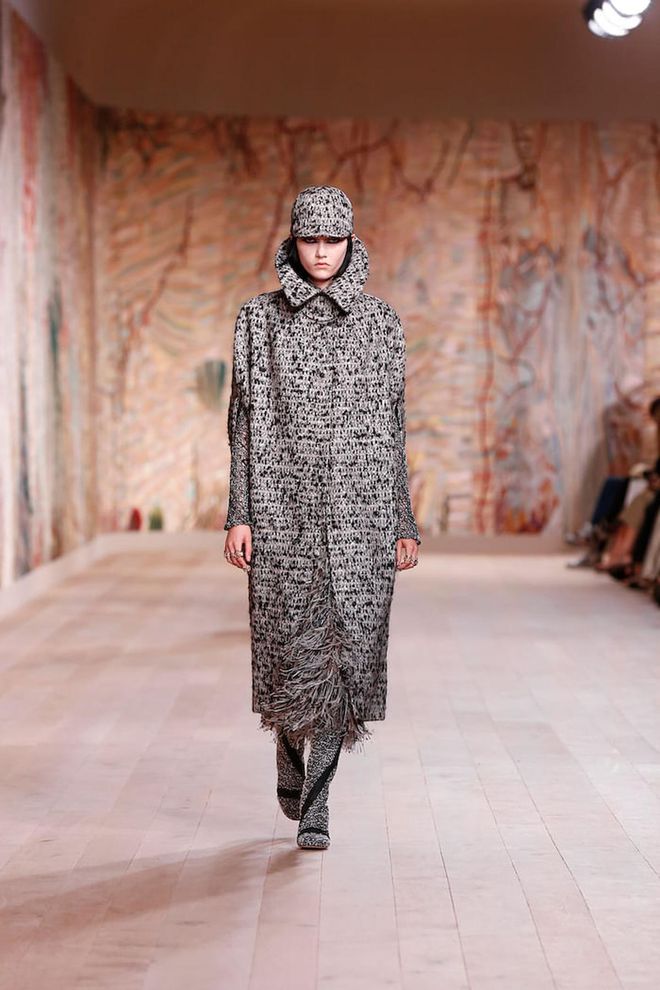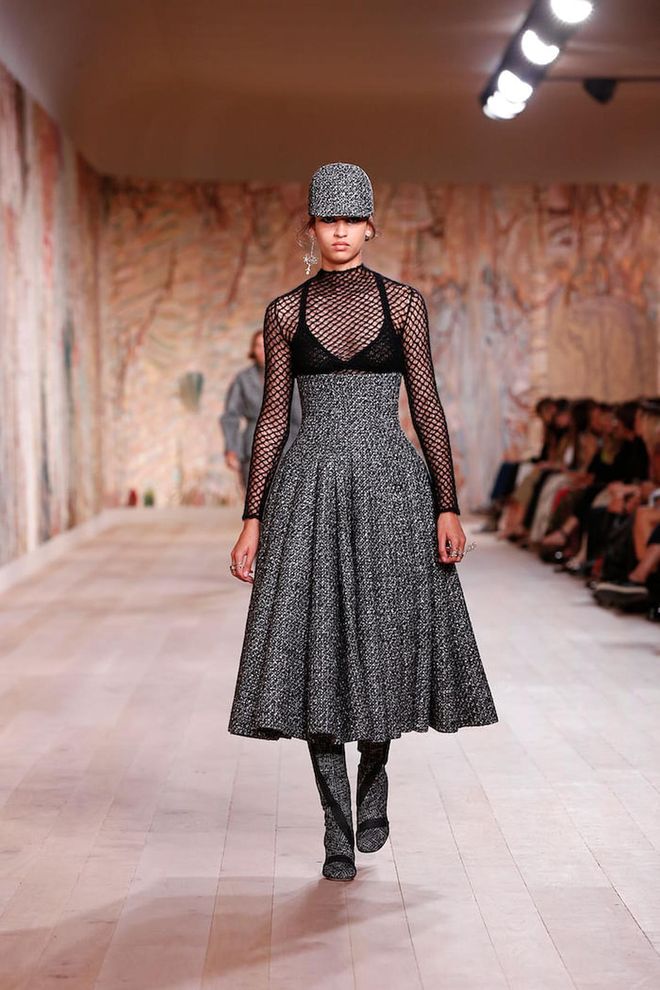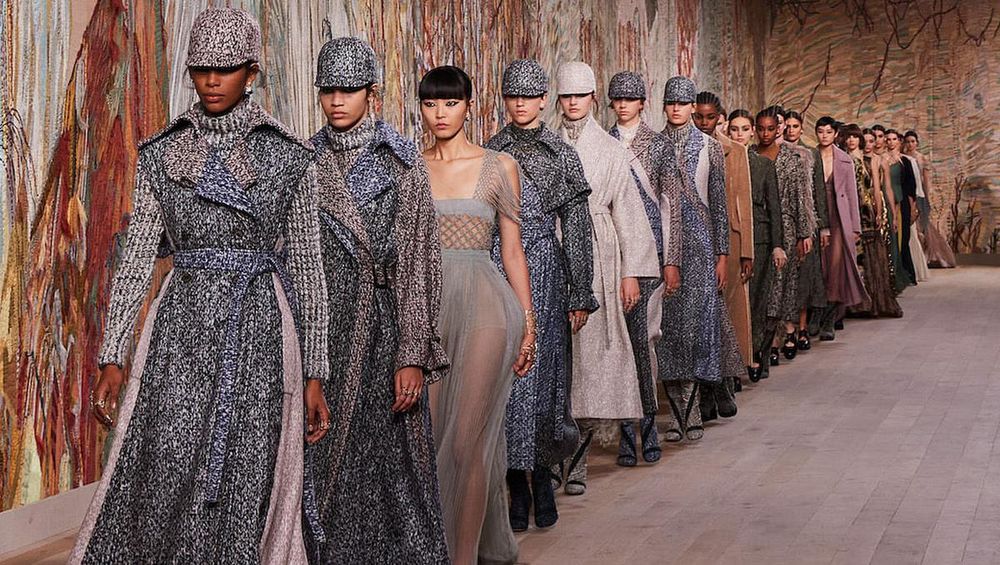The future of fashion week is somehow still in a state of limbo, what with the on-again, off-again lockdowns in Paris (affectionately referred to on the ground as ‘confinement’, ‘de-confinement’ and ‘re-confinement’, respectively). It was befitting then, that Dior's creative director Maria Grazia Chiuri sought to reiterate the importance of how Haute Couture should be experienced in the flesh — ‘being present’, as the show note indicated.
Related article: Review Of Dior Cruise 2022 Collection

Photo: Dior
The show venue, constructed in the garden of the Musée Rodin, was lined wall to wall in what at first glance could have been a large-scale mural. On closer inspection, however, it was in fact a monumental work of embroidery. Titled ‘Chambre de Soie’, or ‘Room of Silk’, this artwork was created in collaboration with French artist Eva Jospin. The motifs of trees, vines and imaginary architecture were poetically rendered almost life-sized, spanning 35sqm. The embroidery was done by hand, taking many months, in India by the Chanakya atelier and the atelier of the Chanakya School of Craft. The Chanakya School of Craft, is a non-profit organisation that aims to empower women in local communities while preserving crafts such as embroidery which are otherwise reserved only for men in the country. The work followed Jospin’s drawings, which referenced the Indian-inspired Salle aux Broderies in the Colonna Palace in Rome, and Virgina Wolf’s feminist manefesto, ‘A Room of One’s Own’.
Related article: An Exclusive Interview With Maria Grazia Chiuri, Creative Director Of Dior

Photo: Dior
For the collection, it's all about textured tweeds, pleats, houndstooth and chevron knitted wool in long coats and caps; macramé bodices on airy-light gowns, and braiding of silk into delicate ropes that around the models’ shoulders and waists. In contrast to the intricacy and complexity found in the fabrics, the silhouettes are languid and clean. Coats and jackets are roomy and softly structured, sometimes styled nonchalantly over silk gowns, while dresses are free-flowing and easy, all paired with tweed boots and mesh ballet flats.
